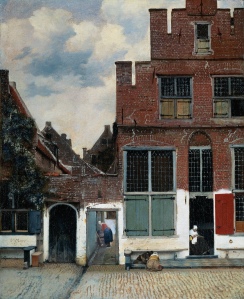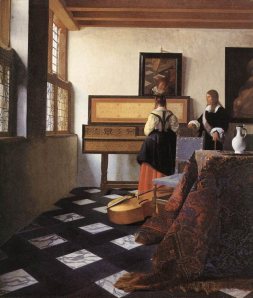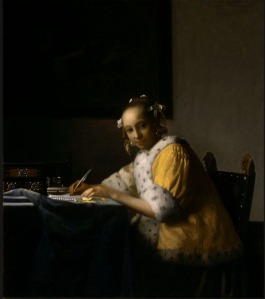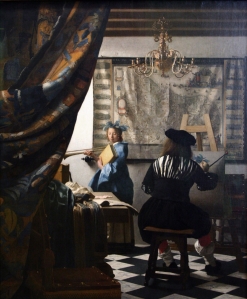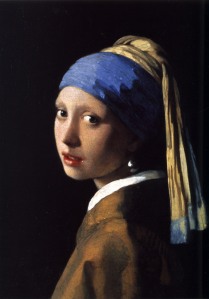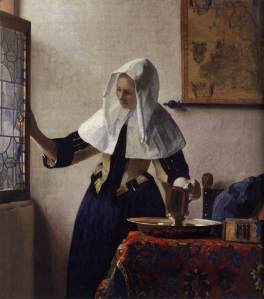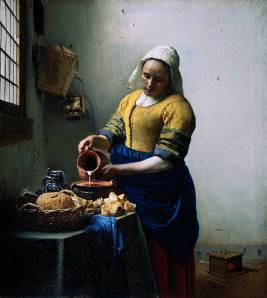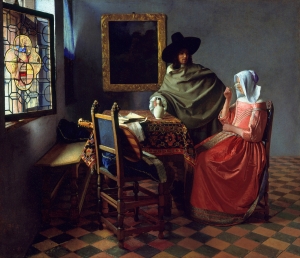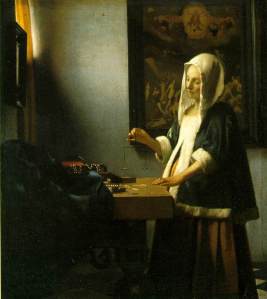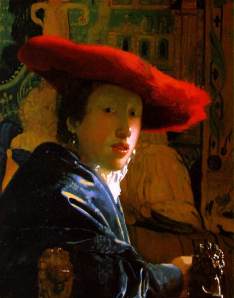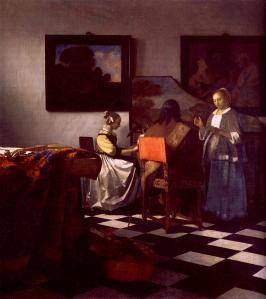Dutch master Johannes Vermeer enjoyed moderate success in his life time but nothing compared to the adoration and recognition his work inspires today. Born in 1632 in Delft relatively little is known or Vermeer’s early life. Perhaps the mysticism and enigma surrounding his formative years and training appeal to a romantic modern audience. Most of what we know about Vermeer is gleaned from his paintings which reveal the routines, surroundings and conventions of middle class Dutch society. Only 35 paintings have been incontrovertibly attributed to the artist and it seems that he worked over an extended period on each piece, concentrating on the exquisite detail that was particular to his style. Known as a genre painter, he was thought to have studied under Leonaert Bramer and tackled mythological, religious and domestic subjects. Possibly due to an interest in use of the camera obscura, Vermeer’s work has a particular atmosphere of touchable reality and depth of field. Using vibrant pigments, famously lapis lazuli and Indian Yellow, Vermeer is most revered for his description of pearly light. Natural cold beams, dapples, refractions and shadows flicker across his paintings and contrast with his beautifully rendered architectural spaces, painstakingly positioned and clearly defined. It is thought that he painted the same two rooms repeatedly, lovingly describing the rich ornamentation and subtle textures and fixtures of each space with equally sharp observation. The figures are tranquil and elegant, indulging in quiet pursuits. The symbolic meaning of some of his work is revealed by depicting paintings within his paintings. It seems that Vermeer used several models repeatedly. This obsessive quality is evident in the manner of his work too, every fabric and surface, skin texture and metallic ornament exquisitely described with equal care. It is thought that Vermeer painted in thin washes and layers. Cold tonal colours and shading that described light and depth over which transparent glazes of vibrant and rich colours were painted. Having married into a wealthier family than his own, it is said that Vermeer was obligated to convert to Catholicism but his devotion to naturalistic subject matter perhaps reveals a slight unease around the faith and a firmer grounding in reality and a deep fascination with his immediate environment and the people who occupy it. Despite achieving respectability and recognition Vermeer left his wife and children in debt on his death. In 1653, Vermeer became a member of a trade association of painters called the Guild of St Lukes during a turbulent era in the history of the country which was buckling under economic crisis, plague and war. In recognition of such troubled circumstances Vermeer was not asked to pay the usual admission fee and in 1662 he was elected as head of the guild. Despite his obvious status among peers, Vermeer never had any pupils and it is thought that his pace of work, his role as head of house, inn keeper and father of fifteen children restricted more ambitious artistic achievement but the financial environment of the time made this difficult. Vermeer’s work transends his complicated circumstances and demonstrate that beauty and opulence are possible where strife, worry and obligation seem to dominate.
guliverlooks
Exploring the delightful, the dedicated, the decadent and the despicable alike. Written by artist Sarah Muirhead (www.sarahmuirhead.com) Contact guliverinfo@gmail.com to submit

